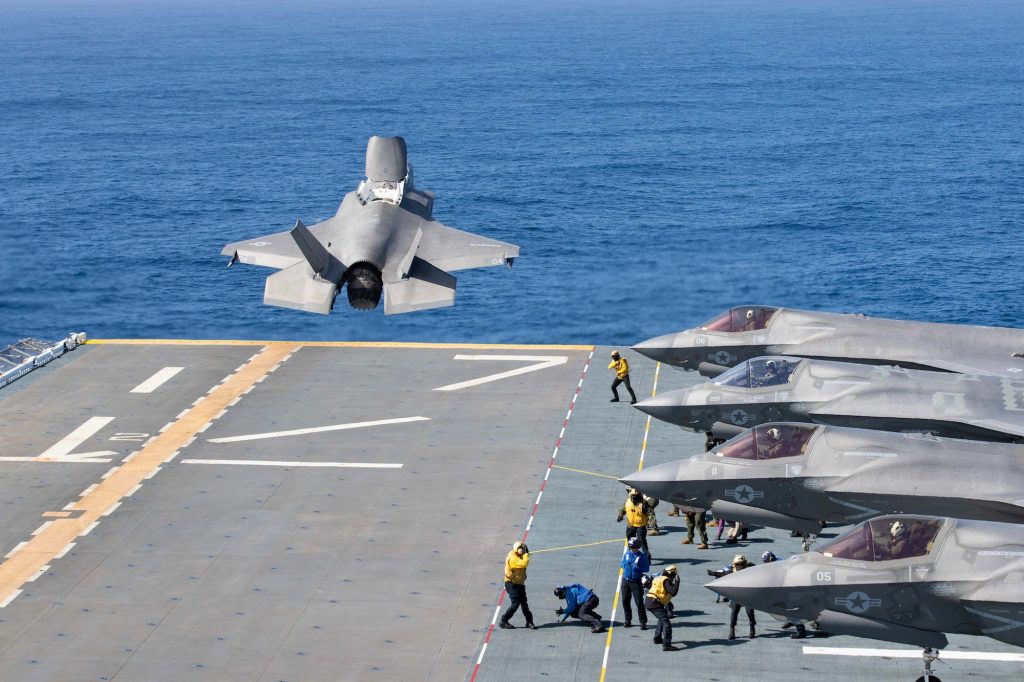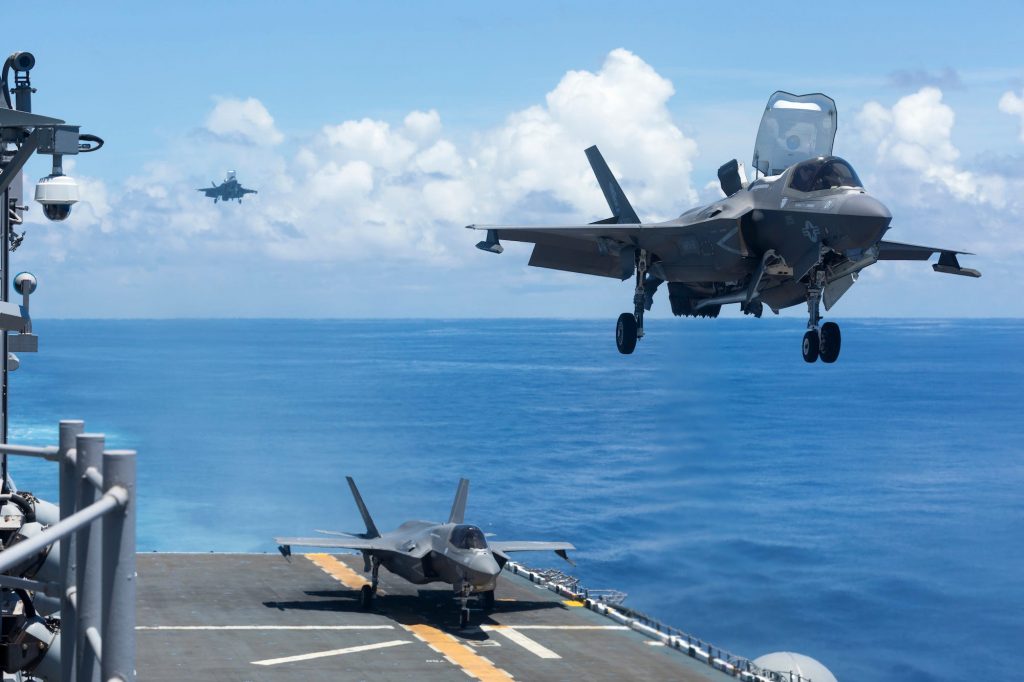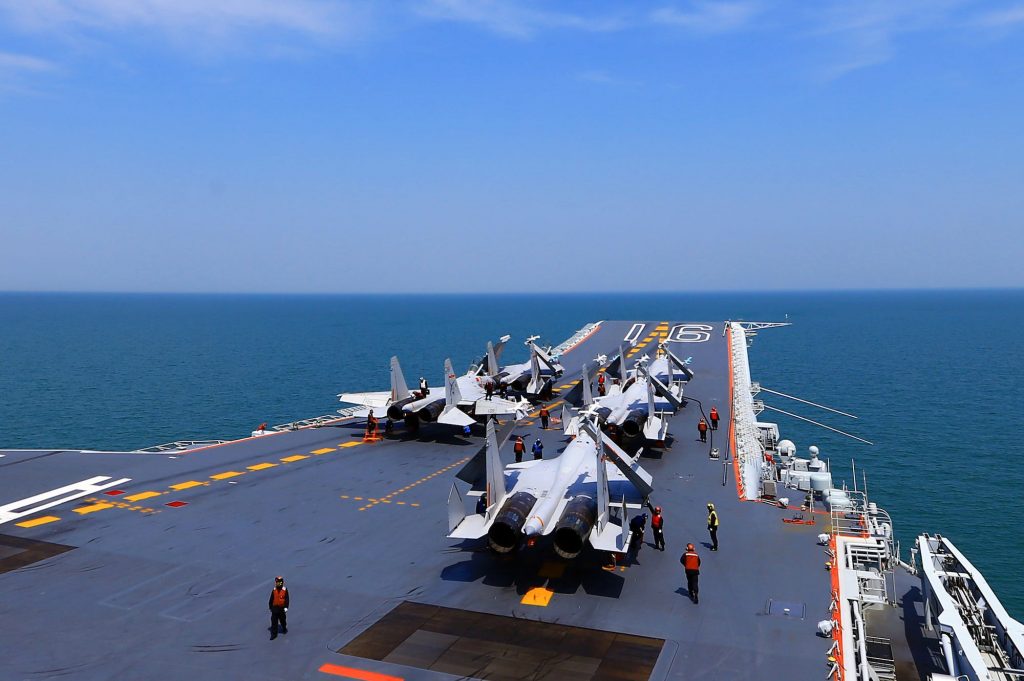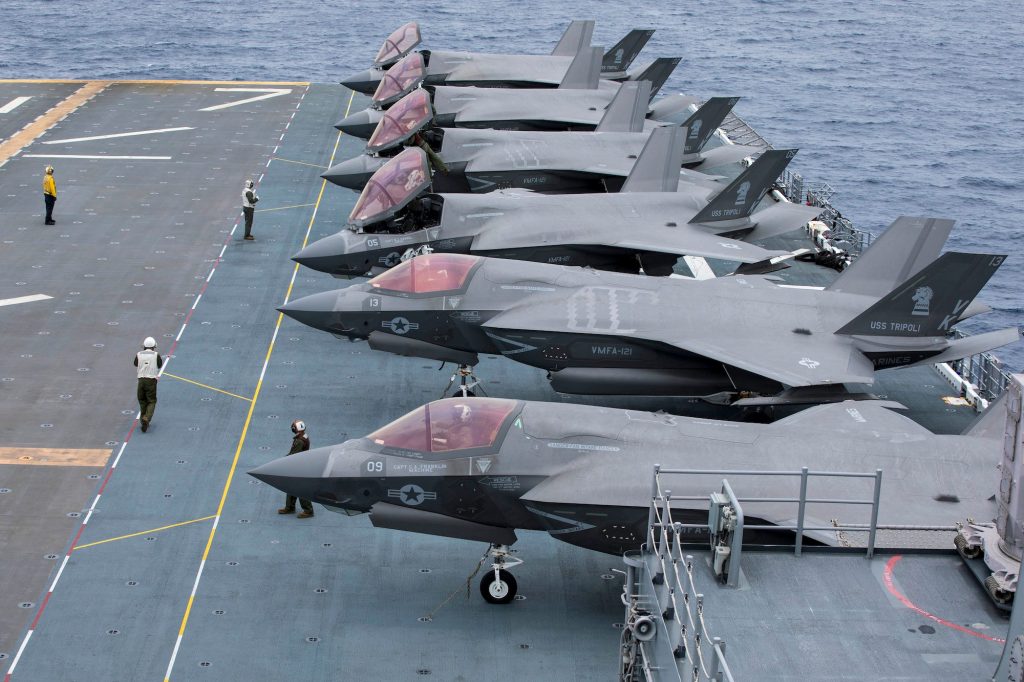- Amid tensions with China, the US military is working on new concepts to fight a war in the Pacific.
- The Navy and Marines worked on one of them, the “lightning carrier,” for several months this year.
- While not a full-size carrier, a “lightning carrier” is better than China’s flattops, a US admiral says.
US officials have warned that China might try to capture Taiwan by force before the end of the decade.
The Chinese Communist Party has never ruled Taiwan but views the island as a breakaway province, and tensions between Beijing and Washington as well as the ongoing focus on the war in Ukraine have raised concerns about how the US and its allies would respond to a conflict in the Pacific.
If there is a clash with China over Taiwan, the navies and air forces of the countries involved would shoulder most of the operational burden.
The US Navy understands that and is working on contingencies and new concepts that would allow it to get the most out of its ships and aircraft to counter China’s rapidly expanding naval and air forces.
The Lightning Carrier concept

At an event hosted by the US Naval Institute and the Center for Strategic and International Studies in October, Vice Adm. Karl Thomas, commanding officer of the US Navy’s 7th Fleet, talked about one of the ways the Navy is working to expand its firepower in the region.
Over the summer, the Navy and the Marine Corps continued experimenting with the “Lightning Carrier” concept, which envisions US Navy amphibious assault ships stocked with US Marine Corps F-35B fighter jets to project power as part of a more distributed force.
USS Tripoli, an amphibious assault ship designed to carry Marines, helicopters, and vertical-takeoff aircraft, spent several months this year sailing with more than dozen F-35Bs, operating like a light aircraft carrier than a standard amphibious ship.
A light aircraft carrier embarks with fewer jets than a fleet aircraft carrier — as many as 20, compared to more than 50 on a fleet carrier — but it costs much less and is more versatile.

Because of that, Tripoli’s commanding officer refers to the configuration as an “assault carrier” rather than “lightning carrier,” according to Thomas, whose command is responsible for US Navy operations in the western Pacific.
“One day you can have F-35Bs on the flight deck. The next day you can have MV-22s and you can be putting Marines at the shore, and so it just is a very versatile instrument,” Thomas said of the lightning carrier.
The Navy is still experimenting with how to integrate the lightning carrier with “a full-size carrier” and its carrier strike group, which is composed of a carrier, escort ships for defense and resupply, and at least one submarine. Thomas said the Navy had two of its nuclear-powered carriers operating with Tripoli during the Valiant Shield exercise in June.
Interestingly, Thomas also said that an amphibious assault ship, designated an LHA, in the lightning-carrier configuration is much more capable than the two aircraft carriers that China has in service.

“I will note that LHA with 14 F-35Bs is much more capable than either of the PRC’s current carriers, both from a sortie-creation perspective as well as just a sheer capability,” Thomas said.
The F-35B Lightning II is the short-takeoff and vertical-landing variant of the F-35 Joint Strike Fighter, a fifth-generation fighter with advanced capabilities. In addition to being a STOVL jet, the F-35B’s array of sensors allow it to act as a battlefield hub, relaying information to friendly forces across a wide area.
“There is no comparison between a J-15 and an F-35B,” Thomas said, referring to China’s main carrier aircraft.
A lightning carrier also allows allies and partners “to see the capability you can bring with the F-35Bs on the flattop,” Thomas said, pointing to the UK, which sent a carrier embarked with F-35Bs to the Pacific last year, and to Japan, which is converting two helicopter carriers to operate F-35Bs.

China has built and launched three aircraft carriers over the past decade, reflecting the Chinese Communist Party’s heavy investment in modernizing its military, relying in part on espionage to close its technological gaps with the US.
China’s People’s Liberation Army remains much less capable than the US military, but it is reaching parity in numbers. It now has the world’s largest navy and the third-largest aviation force.
Beijing has signaled that it wants to reshape the existing international order to advance its regional and global ambitions and that it’s willing to confront the US to do it. A move to absorb Taiwan, a top priority for Beijing, could very well escalate into a clash with the US and its allies across the Indo-Pacific.
In such a conflict, the lightning carrier would help the US Navy and Marine Corps spread out their forces, increasing their likelihood of survival and improving their ability take on multiple Chinese threats at once.
Stavros Atlamazoglou is a defense journalist specializing in special operations, a Hellenic Army veteran (national service with the 575th Marine Battalion and Army HQ), and a Johns Hopkins University graduate. He is working toward a master’s degree in strategy and cybersecurity at the Johns Hopkins’ School of Advanced International Studies.
